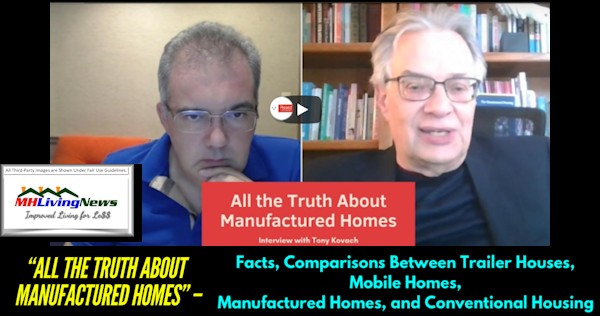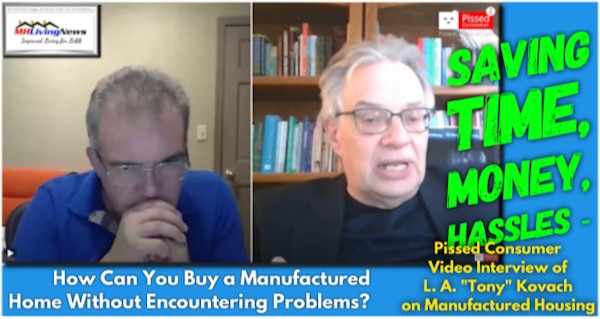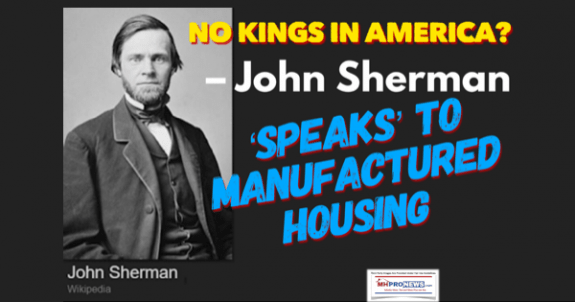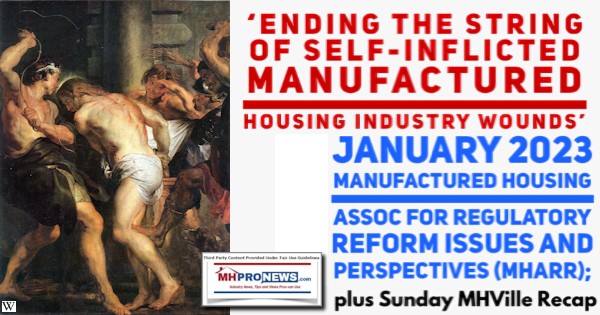
There is so much that occurs every week in the cut down to size manufactured housing industry (a.k.a. MHVille) that a weekly recap every Sunday is in order. It makes one wonder why other trade publications and bloggers don’t do this? One reason: they don’t publish nearly as much as MHProNews/MHLivingNews does. This platform remains the, first, one and only known Daily Business News source in the industry. 7 days a week aren’t enough, but one does what one can with the timeframe that society and God established. Every Sunday on this platform there is a ‘focus’ report, sometimes with a second topic in the postscript segment following the weekly headlines in review. This Sunday’s featured report? It is “Ending the String of Self-Inflicted Manufactured Housing Industry Wounds,” authored by Mark Weiss, J.D. of the Manufactured Housing Association for Regulatory Reform (MHARR). Once you read it, after a focused Part II, the topics for the week that will come into a sharper focus for the detail minded.
Part I.
“Ending the String of Self-Inflicted Manufactured Housing Industry Wounds”
By Mark Weiss, J.D., President and CEO of MHARR

Indeed, it is mystery why MHI, instead of seeking to inflict a federal fire sprinkler standard on the HUD Code industry, has not formed an alliance with NAHB to oppose any and all such mandates – for any type of home — at the state and/or local level. Thus, while MHI routinely touts its cooperation with other segments of the housing industry to oppose or promote various legislation, programs and policies (See, MHARR’s July 26, 2022 White Paper, entitled “The Exploitation of Federal Housing Finance and Mortgage Funding Assistance Programs and Potential Solutions”) – in ways that are particularly beneficial to the site-built housing industry — it is nowhere to be found partnering with NAHB to oppose baseless sprinkler mandates.
This contradiction is especially relevant in the wake of the energy rule fiasco. One would think that after being slapped around by the U.S. Department of Energy (DOE) as “thanks” for supporting DOE’s phony 2015-2016 “negotiated” manufactured housing energy standards rulemaking process, MHI would have learned something about reckless “volunteering.” Apparently not, though, as that part of the industry, by supporting the introduction of a supposedly “voluntary” sprinkler standard into the HUD Code, stands poised – once again — to be bitten where it hurts, while this “one-two” punch (i.e., energy and sprinkler standards) increases regulatory cost burdens which will further limit the availability of affordable housing and the number of Americans who can afford to purchase a manufactured home, directly contrary to federal law.
The manufactured housing sprinkler standard debate has been around for decades. Not long after the adoption of the National Manufactured Housing Construction and Safety Standards Act of 1974, special interests were already clamoring for a federal manufactured housing sprinkler standard. MHARR, as one of its first priorities, aggressively opposed this effort, asserting that there was a clear basis under the 1974 law for the federal preemption of local sprinkler mandates. Quite simply, the HUD Code standards addressed (and have always addressed) “fire safety,” the same “aspect of manufactured housing performance” impacted by sprinklers, as shown by the National Fire Protection Association’s (NFPA) 13D standard, which is designed to “provid[e] a reasonable degree of fire safety.” And, in fact, the first official position taken by HUD with respect to sprinkler preemption adopted that exact analysis. In a July 27, 1989 communication to the Fire Chief of Oklahoma City, the then-Director of HUD’s Manufactured Housing and Construction Standards Division stated: “If your municipal requirements include automatic fire sprinkler systems, they address the same aspect of performance as HUD’s standards, i.e., fire safety. Therefore, HUD’s standards preempt.” (Emphasis added).
This common-sense position held until HUD’s Office of General Counsel (OGC) intervened years later. As shown by MHARR Freedom of Information Act (FOIA) requests, HUD lawyers argued in confidential memoranda for preemption under the 1974 law – and its crucial “same aspect of performance” test – to be construed narrowly. This set up a framework that could be corruptly manipulated to defeat federal preemption by simply re-defining, in an ever-narrower way, the alleged purpose of any regulation. Under this framework, the straightforward notion that HUD’s existing “fire safety” standards and local sprinkler mandates both addressed “fire safety” – and, therefore, the “same aspect of manufactured housing performance” – was rejected. Instead, localities were informed that while the existing HUD standards addressed “fire safety,” local sprinkler mandates addressed “fire suppression” – supposedly something completely different.
HUD, therefore, nullified preemption under the 1974 Act via an “interpretation” that made it virtually meaningless. MHARR (with no help from MHI) vigorously opposed this action and stressed its absurdity to Congress when it came time to reform the 1974 Act. Given direct evidence showing that HUD lied in statements claiming that preemption under the 1974 Act was being construed “broadly,” when just the opposite was the case, Congress decided to make the issue crystal clear. As a result, the 2000 reform law added language stating that “federal preemption … shall be broadly and liberally construed ….” (Emphasis added). As a result, the 2000 reform law, statutorily invalidated all prior HUD preemption decisions based on the post-1989 narrowing of the “same aspect of performance” test.
This in itself could – and should – have set the stage for industry-wide pressure on HUD to fully preempt local sprinkler standards for manufactured homes. The argument for preemption, however, was strengthened even further in 2011, when NFPA, under direct pressure from MHARR, was forced to concede that HUD Code homes, in key fire safety metrics, were as safe or safer than site-built homes (thus bringing its statistical analysis into alignment with the findings of multiple Foremost Insurance Company studies). No less an “authority” than NFPA, accordingly, confirmed that the HUD fire safety standards – without sprinklers – ensure the “reasonable fire safety” of manufactured homes.
These developments — the enhancement of federal preemption under the 2000 reform law and objective proof of the fire safety of HUD Code homes, without the use of or need for fire sprinklers – should have been the end of both the fire sprinkler and fire sprinkler preemption debate, by conclusively establishing:
- That HUD Code homes built to the federal standards are already fire safe, without sprinklers;
- That a sprinkler mandate would unnecessarily add to the cost of manufactured homes without materially enhancing fire safety; and
- That, as “broadly and liberally” construed, “fire safety” is the same aspect of manufactured home performance addressed by boththe federal standards and local fire sprinkler standards.
And, in fact, MHARR relied on these crucial points to aggressively re-assert – against specious HUD opposition — its call for the full preemption of sprinkler mandates based on the current HUD Code fire safety standards (i.e., without any type of sprinkler provision).
And that is where the sprinkler debate should have ended. With no federal sprinkler standard and with local sprinkler mandates preempted. But even in the absence of federal preemption, the entire matter should have been left at the local level, with HUD Code manufacturers following the provisions of NFPA 13D to address the small number of situations – and smaller number of jurisdictions – where sprinklers needed to be addressed. This would have left the HUD Code out of the debate and avoided saddling a much larger number of manufacturers and consumers with a sprinkler standard, but MHI could not be dissuaded.
Instead, MHI (just as it has failed to hold HUD’s feet to the fire on the federal preemption of discriminatory zoning excluding manufactured homes), offered HUD an escape hatch from its illegitimate refusal to preempt local sprinkler mandates. Taking its cue from HUD’s baseless argument that even under the enhanced preemption of the 2000 reform law, the HUD “fire safety” standards – without an express sprinkler provision – would not preempt local sprinkler mandates, MHI, in 2011, proposed the inclusion of a so-called “voluntary” sprinkler provision in the HUD Code (based on NFPA 13D) that would govern sprinkler systems in manufactured homes where they were sought by consumers or otherwise required by local (or state) law. And now, eleven years later, this MHI-proposed “voluntary” sprinkler standard has been included in a Notice of Proposed Rulemaking (NPRM) issued by HUD on July 19, 2022.
Simply put, though — and as MHARR stressed in written comments on the NPRM filed in August 2022 — a “voluntary” federal sprinkler standard, as advanced by MHI, is little more than a trap that the industry is unwittingly stumbling toward. Aside from the undeniable fact that any type of sprinkler standard is unnecessary, since HUD Code homes are already fire safe, as documented by NFPA, the following should be obvious as well:
- There is no basis in the 1974 Act, as amended, for a “voluntary” or “conditional” federal manufactured home construction or safety standard of any kind;
- A “voluntary” HUD standard would not remain “voluntary” for long given regulatory “mission creep” and multiple special interest constituencies with an incentive to press for mandatory imposition. In the case of fire sprinklers, those constituencies, include HUD’s entrenched monitoring contractor and the special interest sprinkler lobby itself, both of which would financially benefit from a massive regulatory expansion;
- An express federal sprinkler standard, as explained above, is nota prerequisite for federal preemption of local sprinkler mandates, especially under the enhanced preemption of the 2000 reform law;
- The adoption of a federal fire sprinkler standard, even if “voluntary,” will have severe impacts on the availability and affordability of manufactured homes, including, but not limited to: increased consumer costs for sprinkler-equipped homes; increased financing costs for such homes; increased production and design costs for sprinkler-equipped homes; increased insurance costs for non-sprinklered manufactured homes; and increased lot rents and placement fees based on needed upgrades to community infrastructure, among other things;
- While the site-built housing industry is vehemently opposing sprinklers in their homes, the adoption of a federal manufactured housing sprinkler standard will be portrayed by industry competitors, detractors and others as demonstrating that HUD Code homes need additional fire safety protection, even though NFPA has deemed manufactured homes to be as fire safe or safer than other types of homes;
- The adoption of a federal manufactured housing sprinkler standard will be cited and manipulated by trial lawyers to assert that HUD Code manufacturers, retailers and/or communities that do not equip their homes with sprinklers (or do not have the infrastructure necessary to support sprinklers) are negligent in the event of a fire loss, injury, or death; and
- Even a “voluntary” or “conditional” standard would place significant pressure on community owners to either provide the water storage and related systems necessary to support a significant number of sprinkler-equipped homes — and thereby incur costly water system upgrades — or face the prospect of litigation and liability.
And even these pitfalls do not exhaust the full range of dangers to the availability, affordability and utilization of HUD Code manufactured homes that would flow from a misguided, unnecessary and needlessly costly federal manufactured home sprinkler standard of any kind.
As the entire industry should know by now, “going along” with regulators does not work for a comprehensively federally-regulated industry like manufactured housing. That was demonstrated with glaring clarity by the entire energy rule fiasco, which capped off years of self-inflicted industry wounds. The energy debacle also shows that the time to stop an unnecessary and destructive rule is as early as possible in the rulemaking process. As a result, the industry should assert its strong opposition to any federal fire sprinkler standard, as MHARR has, and as has been the case with representatives of other segments of the housing industry. Learning the lessons of past failures is key to future survival and prosperity, while those who refuse to learn the lessons of history are destined to repeat them. ##
Mark Weiss
MHARR is a Washington, D.C.-based national trade association representing the views and interests of independent producers of federally-regulated manufactured housing. ###
Part II. Additional Information with More MHProNews Analysis and Commentary
Based on a range of sources, facts, evidence, and inputs – including MHI, MHARR, state association, manufactured home industry corporate statements, and others, MHProNews has formulated a reply to Weiss’ question.
- “How else, then, to explain the fetish-like insistence of the Manufactured Housing Institute (MHI) – a self-professed “industry” trade group — on advancing a so-called “voluntary” federal fire sprinkler standard for manufactured homes?”
Before sharing that reply, consider this pull quote from the above by MHARR’s Weiss.
- “…it is mystery why MHI, instead of seeking to inflict a federal fire sprinkler standard on the HUD Code industry, has not formed an alliance with NAHB to opposeany and all such mandates – for any type of home — at the state and/or local level. Thus, while MHI routinely touts its cooperation with other segments …(and here cites the MHARR White Paper)… – in ways that are particularly beneficial to the site-built housing industry — it is nowhere to be found partnering with NAHB to oppose baseless sprinkler mandates.
In yesterday’s report that is found among the linked headlines below, MHProNews cited Tammy Bruce’s insightful remark about con jobs.

See that report linked below for Bruce’s credentials, the context, and application of her remarks with respect to manufactured housing.
Before an antitrust, RICO, Hobbs Act (defined by a lawfirm as “The Hobbs Act under 18 U.S.C § 1951 is a federal law prohibiting extortion or robbery by wrongful use of force or fear, or the attempt of these crimes…), or other civil or criminal litigation can be launched, a reasonable ‘theory’ or ‘hypothesis’ for a case must be forged. Evidence in support of that case is needed. Without a sound theory and supportive evidence, any case is likely to be tossed fairly quickly by the defendant in a motion to dismiss.
The ’case’ for several possible actions by state or federal officials, or perhaps by private litigants, could by framed like this.
- There is a well-known affordable housing crisis in the U.S.
- Manufactured housing is one of the best, perhaps the most proven, form of permanent or long-term affordable housing ever in U.S. history. About 22 million people are living in a pre-HUD Code mobile home or a post-HUD Code manufactured home (about 20 percent of those would be mobile home residents, while the remaining 80 percent would be manufactured home residents).
- After investigating manufactured housing, a widely bipartisan Congressional act signed into law by President William Jefferson “Bill” Clinton (D) was enacted called the Manufactured Housing Improvement Act of 2000 (MHIA, MHIA 2000, or what MHARR may refer to as the 2000 Reform Law). The MHIA was designed to support manufactured housing as an affordable housing solution. In exchange for some of the most robust consumer protections available for home buyers at often far higher price-points, the MHIA granted manufactured housing a right commonly called “enhanced preemption” over local zoning and placement barriers.
- In 2011 and 2012 Congress investigated through hearings why the MHIA was not being properly implemented, and specifically looked at the issue of why the “enhanced preemption” issue was only occasionally invoked by HUD.
- The first administrator for the MHIA established Office of Manufactured Housing Programs (OMHP), William “Bill” Matchneer, J.D., told MHProNews that HUD’s Office of the General Counsel “would not enforce” “enhanced preemption.”
- After over 22 years has elapsed, the Manufactured Housing Institute (MHI), apparently dominated by larger corporations that are often publicly traded and produce relevant information and statements, has yet to file a suit to get the MHIA and its enhanced preemption requirements enforced. Why not? Who benefits from the status quo?
- What is the status quo? Several larger firms have arguably manipulated the marketplace, including MHI and numbers of state associations, in a manner that has steadily consolidated big or even dominating segments of the manufactured housing industry. Where are the antitrust regulators, the Federal Trade Commission (FTC) or the antitrust division of the Department of Justice? Where, other than this platform and our MHLivingNews sister site, are the news media on this issue that has impacted literally tens of thousands of independent businesses, but as or more importantly, which has harmed the interests and rights to affordable home ownership of tens of millions of potential manufactured homeowners?
- Where are the federal, state, or media probes that expose this pattern of apparent corruption that is hiding in plain sight?
To be clear, several outside researchers looking into manufactured housing specifically, or with respect to Warren Buffett and Berkshire Hathaway, have raised antitrust concerns, for example. There have been mainstream news reports and evidence-based op-eds that have called attention to what is occurring in the manufactured home industry. Nevertheless, there is still a dearth of activity. Why?
Perhaps the answer to that is best framed like this. Buffett-led Berkshire has faced antitrust and other scrutiny for years. They have a legal defense team, including possible attorneys such as Ron Olson of Munger, Tolles and Olson LLP (MTO). Buffett, Berkshire and their allies have significant influence in mainstream media, and owned dozens of newspapers outright for years. Berkshire’s BH Media Group is not known to have ever provided a similar argument for using the MHIA as MHARR, MHProNews/MHLivingNews has done. Yet, on paper, MHI appears to say similar things as MHARR does about the MHIA. That later fact is an example of paltering, posturing, and con-job style ‘razzle dazzle’ in action.
A case could be mounted against Berkshire Hathaway that may be worth some $200 billion dollars, and Berkshire has the financial resources to pay for such an outcome. But even before a case against Berkshire owned Clayton Homes and their affiliated lenders are brought, a smaller, more focused litigation could be deployed against MHI, Skyline Champion (SKY), Cavco Industries (CVCO – which settled an embarrassing case in 2022 with the Securities and Exchange Commission (SEC)), Sun Communities (SUI), Equity LifeStyle Properties (ELS), Dave Reynolds and Frank Rolfe linked firms, Flagship Communities (MHC-U.TO), and the list could go on. It is the considered expert opinion of this writer for MHProNews that a case against one or more of those smaller organizations might be less intimidating, and could yield through discovery still more evidence against Clayton, their affiliated lending (21st Mortgage Corporation and Vanderbilt Mortgage and Finance (VMF)), and thus Berkshire Hathaway itself. A ‘win’ against a smaller firm could set the stage for a victory against the giant whose behavior has arguably played a major role in the underperformance of manufactured housing through some 20 years – the bulk – of the 21st century.
MHProNews and our sister site have asked Olson to respond to such concerns. Silence. Documented inquiries have been made to MHI, several of their corporate and board leaders, also asking them about such concerns. Silence. This writer has invited them to debate their performance for years at an industry event in front of an industry audience. They may posture a willingness (in the case of a surrogate, who when pressed, declined actually engaging in such a public debate) to discuss or debate these concerns in front of those who are impacted and know several of the facts firsthand. Instead, the powers that be in MHVille have arguably attempted a series of tactics that include barring MHProNews and this writer from various industry events, the most recent example being the one linked here.
Restated, there is a reasonable case that no one could be as inept as MHI and several of its corporate leaders at getting good laws implemented, or stopping bad regulations or laws from occurring. Therein lies the answer to the question that Weiss’ IP above asked. Now, it is answered.
Several examples of how this scheme that is operating in plain sight plays out in manufactured housing, or how parallels of this ‘rigged system’ have been operating in the U.S.A. for years. As Democrat Robert Reich has put it (see more in the report about him among the headlines for the week, linked below), you have to follow the money. There is no countervailing force in Washington D.C., said Reich in his own words, quite like the motivations caused by money and which can often be traced by following the financial (money) motivations.
Don’t miss today’s postscript.
With no further adieu, here are the headlines for the week that was from 1.8.2023 to 1.15.2023.
What’s New on MHLivingNews
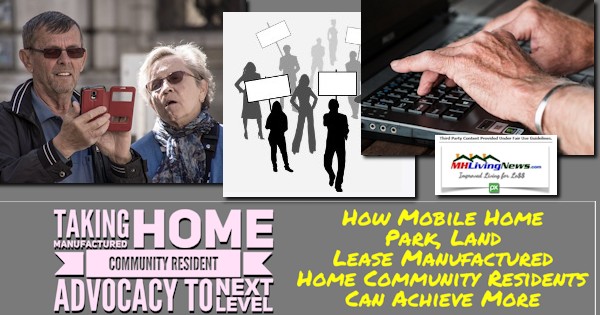

What’s New in 2023 from Washington, D.C. based MHARR
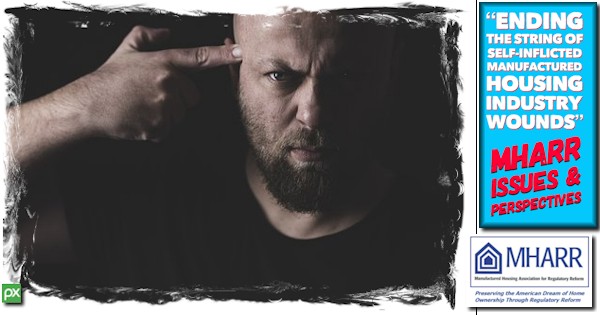
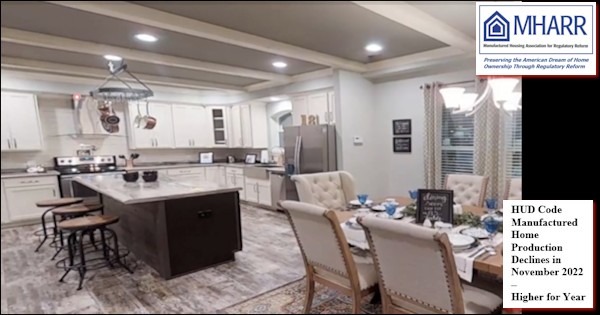
What’s New on the Masthead
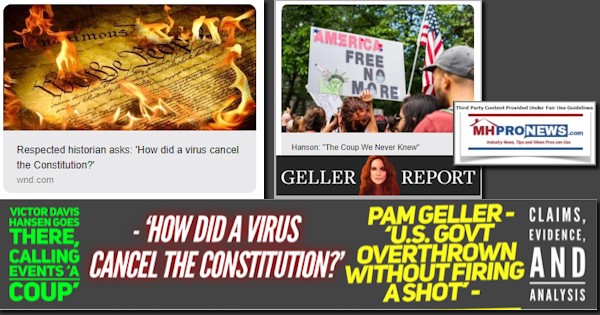
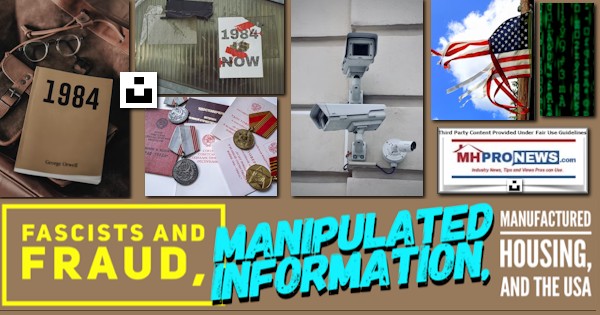
What’s New from Tim Connor, CSP, on the Words of Wisdom
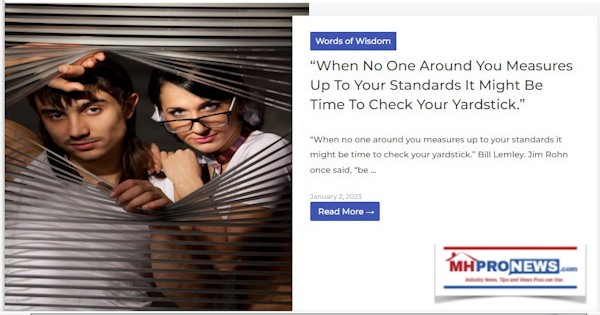

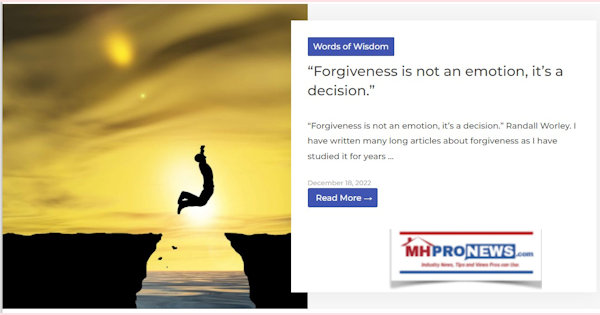
What’s New on the Daily Business News on MHProNews
Saturday 1.14.2023
Friday 1.13.2023
Thursday 1.12.2023
Wednesday 1.11.2023
Tuesday 1.10.2023
Monday 1.9.2023
Sunday 1.8.2023
Postscript
Periodic factory-built housing speaker and prolific author Tim Connor, CSP, has insightfully observed the following. There are four stages of learning. Awareness, understanding, integration, and mastery. BTW, if you Google Tim Connor CSP on this date, there are over 700,000 search results. Tim is a gifted and engaging speaker who knows how to connect and inform.
Segue aside, Tim’s four stages of learning, when pondered, quickly make sense. The thoughts following each of Tim’s four words are mine, not his. He does a far better job explaining his concept, but we’ll give it our own twist for reader’s benefit.
- Awareness. There are dozens of subjects we are ‘aware’ of but may not completely or deeply understand.
- Understanding. Read an article like Mark Weiss’ above (or any of the other meaty topics on this site) twice instead of once, and you are all but assured that your understanding will be deeper than is possible from a single reading or a quick skim. When this author is researching a topic, for instance, someone else’s material might be read several times to pick up and ‘understand’ the various nuances and implications.
- Integration. According to Dictionary.com, “integration· an act or instance of combining into an integral whole.” MHProNews has long said that to truly and properly understand why manufactured housing has been underperforming for over 20 years, someone must grasp the thesis laid out in Part II above of this article. The immense potential of manufactured housing can only be properly tapped by those who have peered into the evidence about manufactured housing, and have crafted a plan that turns lemons into lemonade. Meaning, once the challenges are understood, the apparent strengths of ones opponents could be turned into vulnerabilities in a legal, moral, and marketing senses. Problems are, for the positive thinker, opportunities in disguise.
- Mastery. According to Oxford Languages: mastery means: 1) comprehensive knowledge or skill in a subject or accomplishment. 2) control or superiority over someone or something.
Now, for Connor – who routinely avoids delving into manufactured housing industry politics – this 4 point measure of progress is typically meant for sales people, staffers, management, or corporate leadership. Connor takes talent and by sharing timeless and proven principle, has made them better.
Connor, as a disclosure, is a personal friend besides being a longtime contributing writer for MHProNews. He has no clue that some of his thoughts will be highlighted in this fashion today. For that matter, MHARR doesn’t know that their article will be treated in the fashion that it is above. While they know that at some point we publish their materials, the routinely do not know when or how. So client, apparent allies in the fight for a bigger and better manufactured housing industry, or friendship status may not yield the kind of ‘special treatment’ that some might think.
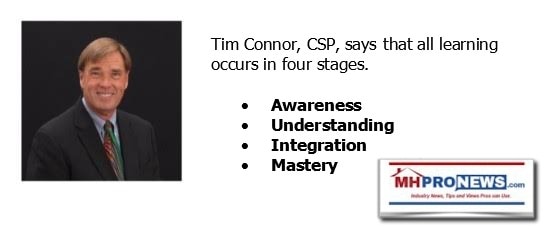
MHProNews began the odyssey of exposing the apparent corruption of MHI through a news tip given to us some 8 years ago, while our firm was still an MHI member. MHI was a periodic client, as were Clayton Homes, 21st Mortgage Corp, and others involved at the trade group. The case could be made that it has cost our parent company and us personally money to expose the apparent and evidence-based allegations of corruption and various illegal and harmful behaviors exhibited by. We have suffered the slings and arrows of outrageous fortune as a result, to borrow a line from Shakespeare. But as true believers in manufactured housing, we are firmly convinced editorially that the only way for the manufactured housing industry to reach its true potential is to root out this corrupt pattern of behavior.
What MHARR’s Weiss has described in his “Ending the String of Self-Inflicted Manufactured Housing Industry Wounds” is but one aspect of a series of problematic behaviors that when carefully examined benefits consolidators. To carry out the con that is operating in plain sight, MHI leaders must posture as if they are a legitimate trade organization. To do so, they palter and utilize con-man like tactics, such as the razzle dazzle. It is entirely possible that for a time, MHI senior staff may not have grasped that they were pawns in a game being played by the trade organization’s dominating members. But given that MHI has hired attorneys that have said in writing that they follow MHProNews (and apparently have for years before), it is now difficult for them to claim ignorance. Whatever crimes or injustices have been played upon smaller firms or potentially tens of millions of Americans, not to mention taxpayers and others, MHI’s senior staff are arguably culpable.
As those who have been involved in litigation know, a common question that arises in depositions, interrogatories, or at trial goes something like this.
- What did you do to mitigate the damages that these people (the other party) caused?
At MHProNews we have an answer for that inquiry. Readers look at the response day by day. We expose it, and then deal with it in the best ways possible under the circumstances.
One reason, perhaps, why thousands of manufactured home industry’s professionals logon daily is to better understand why the industry is underperforming during an affordable housing crisis. Those who have been readers for some time may want to better understand the evidence and possible arguments for or against the hypothesis stated above.
Those who are in the crosshairs, so to speak, of the investigations and probes by this publication are routine readers too. So too are attorneys, public officials, educators, nonprofits, and an array of people and organizations that have some connection to manufactured housing.
A lawfirm that had successfully completed a major case against a giant U.S. company called MHProNews to speak with this writer about the industry’s issues. One of their questions was, how does this apparent market manipulation harm consumers? That’s a multi-billion dollar question. It is an important topic.
As MHLivingNews has explored through various reports, market manipulation demonstrably harms consumers. The articles linked below can in various ways be directly or indirectly connected to the ripple effects of the behaviors that MHARR and others have to some degree exposed.
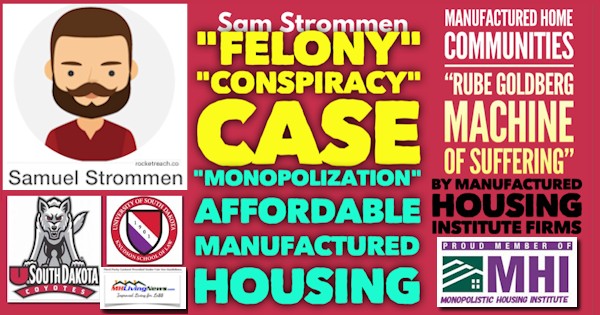
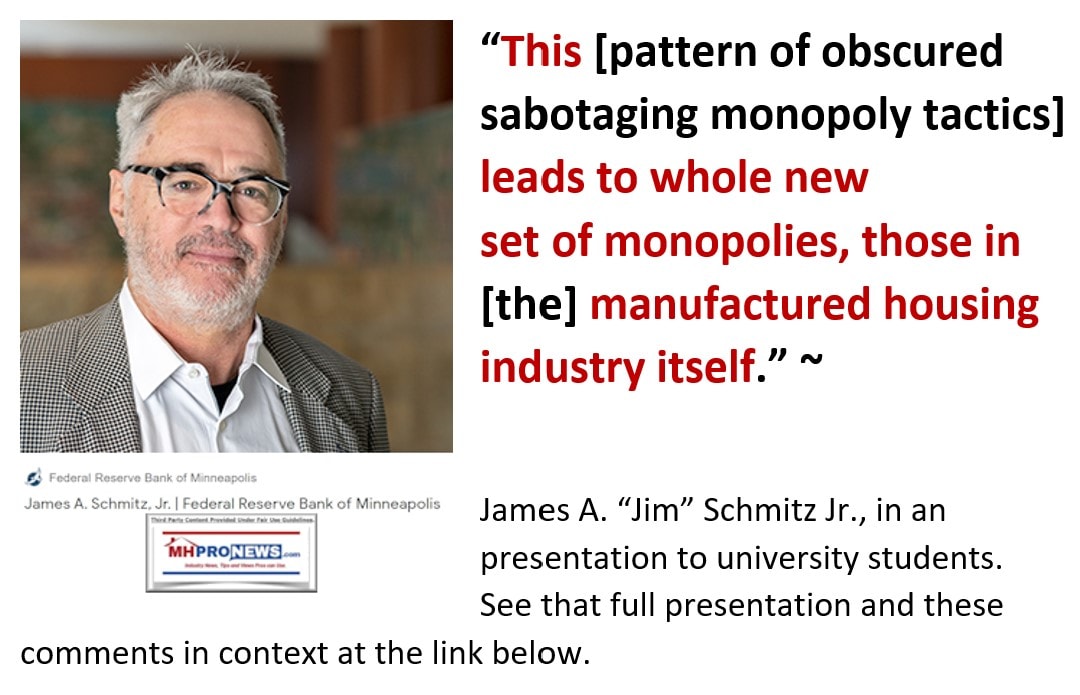
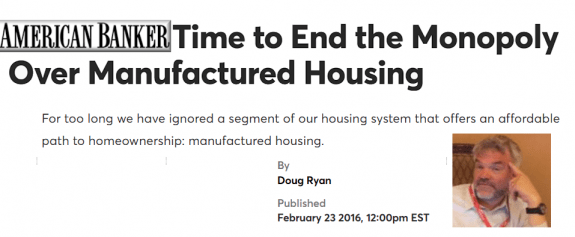
Beyond various and apparent open or veiled threats, honey traps, smear, intimidation tactics, and more deployed by the proxies of those this publication has sought to expose in MHVille, there is the eerie silence among those accused of various immoral and arguably illegal behaviors. Put differently, there is a prima facie case for legal action that stands publicly unopposed. As Cornell Laws Legal Information Institute (Cornell LII) says: “A prima facie case is a cause of action or defense that is sufficiently established by a party’s evidence to justify a verdict in his or her favor, provided such evidence is not rebutted by the other party.” While rebuttals have been attempted by surrogates, there is no known rebuttal offered publicly by those accused.
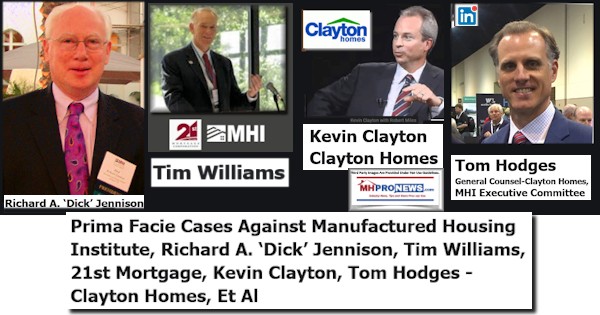
That doesn’t mean that the accused don’t have possible arguments. Of course, they would offer them. But after approaching a decade of pressing these issues at an increasingly sharp, evidence based, and often laser focused levels, the accused have made the calculated guess that they won’t be charged (perhaps counting on political cronyism, or the like) or that they can wear down their opponents.
That’s where the federal case against Cavco should shine. What the SEC exposed to the public in their charges against Cavco further supports the evidence-based allegations made by this publication. Because near the heart of what Cavco was doing was probing competitors for possible takeover efforts. They were engaging in what may be described as sophisticated corporate espionage. Joseph Stegmayer and Cavco Industries both paid 7 figure fines to settle the matter. Stegmayer is a former MHI chairman. Stegmayer is also a former Clayton Homes division president.
Danny Ghorbani said it thoughtfully. No one has spent the time or effort it takes to connect the dots in manufactured housing industry trade publishing that MHProNews/MHLivingNews have.
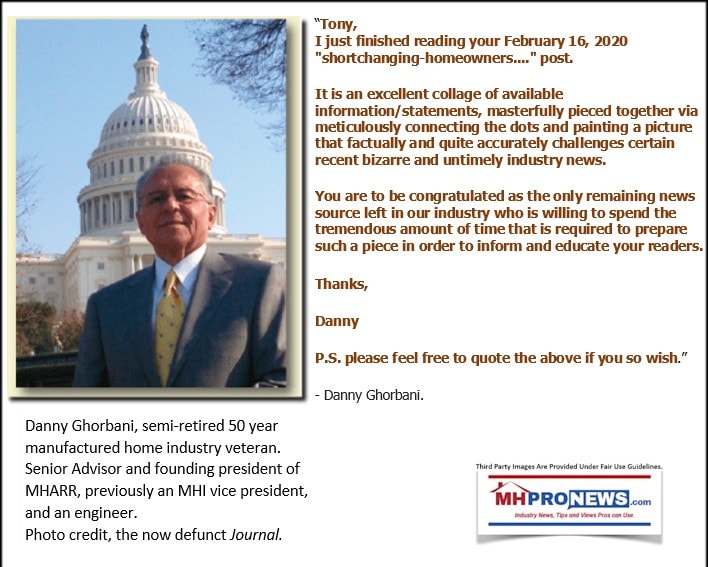
Early on in this publication’s history, and since, there has been praise for our factual, fair, and evidence-based reports, analysis, and editorial commentary. Some of that praise has come from leaders of firms that are in our crosshairs.
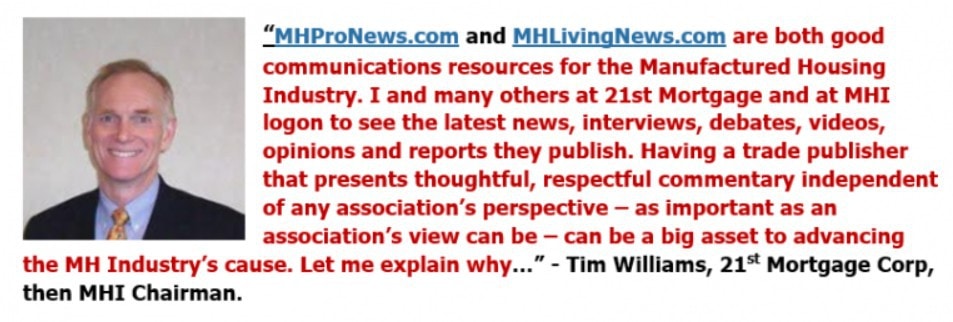
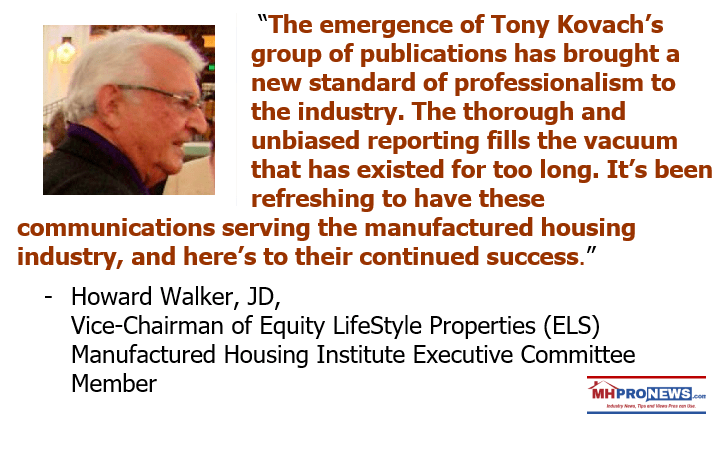
Put differently, is it any wonder that MHI – apparently directly and/or through proxies – has attempted to keep this writer away from industry events? Can you image the questions on the show floor that might be asked and the kind of answers that might be legally recorded? In the light of the facts, the outlandish claim below by one of MHI’s attorneys is revealed to be an obvious smokescreen that aims to obscure his client’s behavior.A
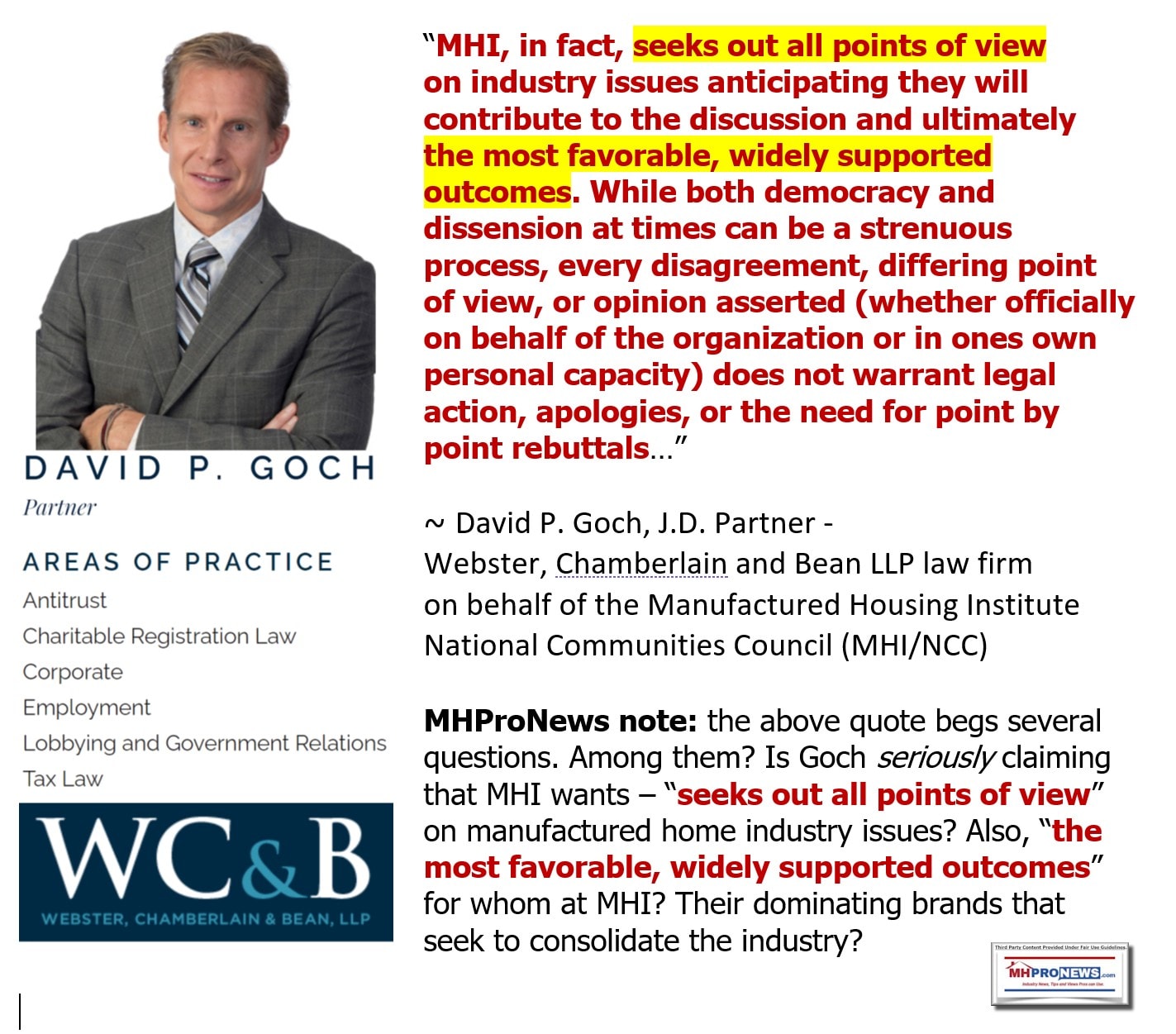
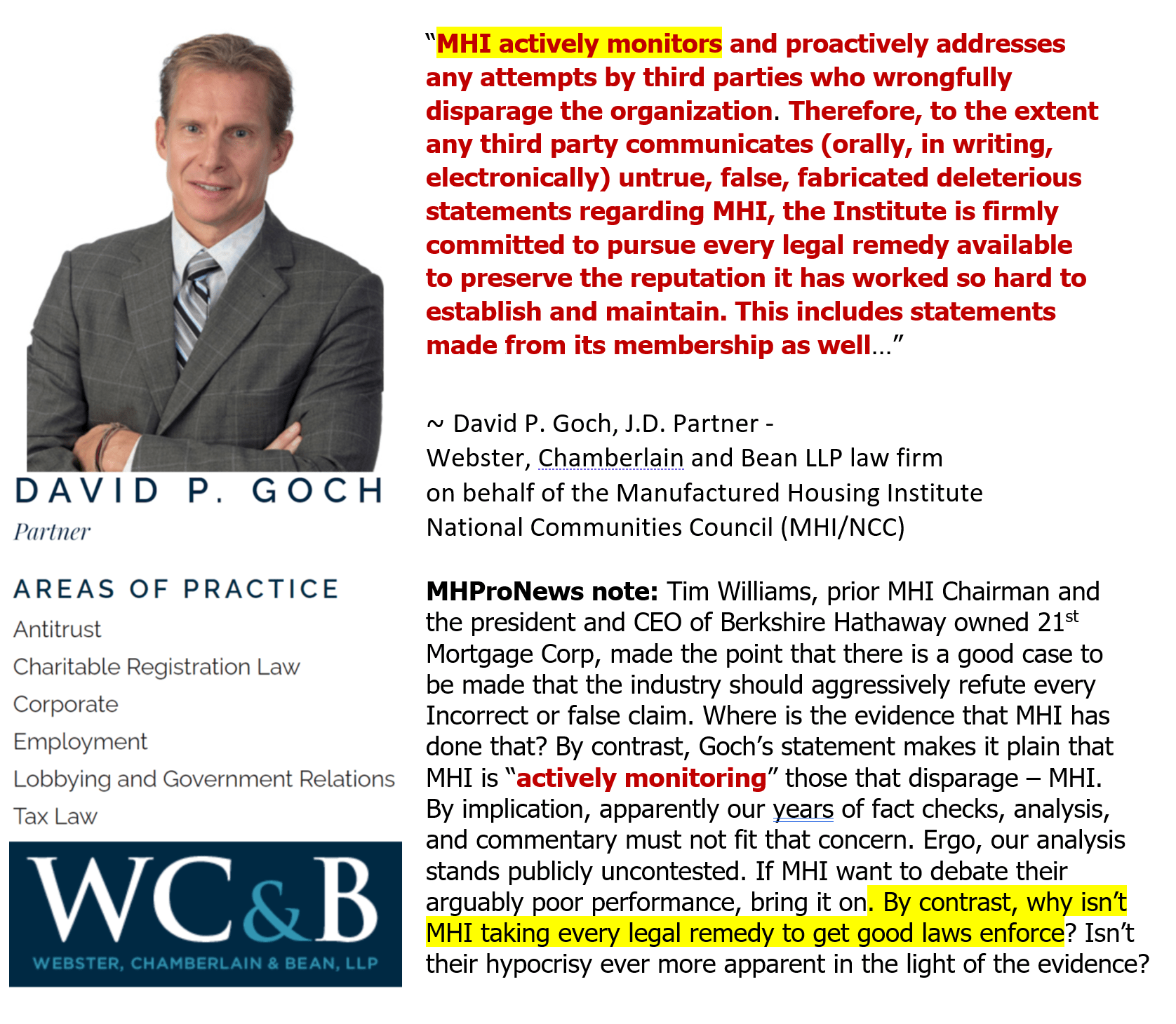
Our website data for 2022 reflects that even long reports like this are routinely heavily engaged by the industry’s readers. Knowingly or not, they may be looking to go through Connor’s four stages of learning, from awareness to mastery.

Those who master these issues arguably have ‘silver lining’ to an otherwise dark cloud opportunities others do not. Can the many beat the big money and manipulators of MHVille? We believe the answer is yes. Should public officials take an active role in probing and prosecuting various individuals and firms? We believe the answer is yes. See the various linked reports to learn more. Because the potential for manufactured housing will be limited until the ‘leeches’ and ‘parasites’ that have undermined our industry through ‘sabotage monopoly tactics’ that have turned manufactured housing into a “Rube Goldberg Machine of Human Suffering” can only be ended by understanding followed by correct action. ###
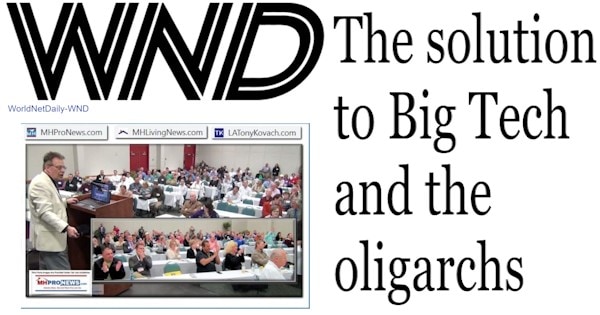
need to wait years for legislation that in the past has often led to little or no discernable benefit. https://www.wnd.com/2021/05/solution-big-tech-oligarchs/
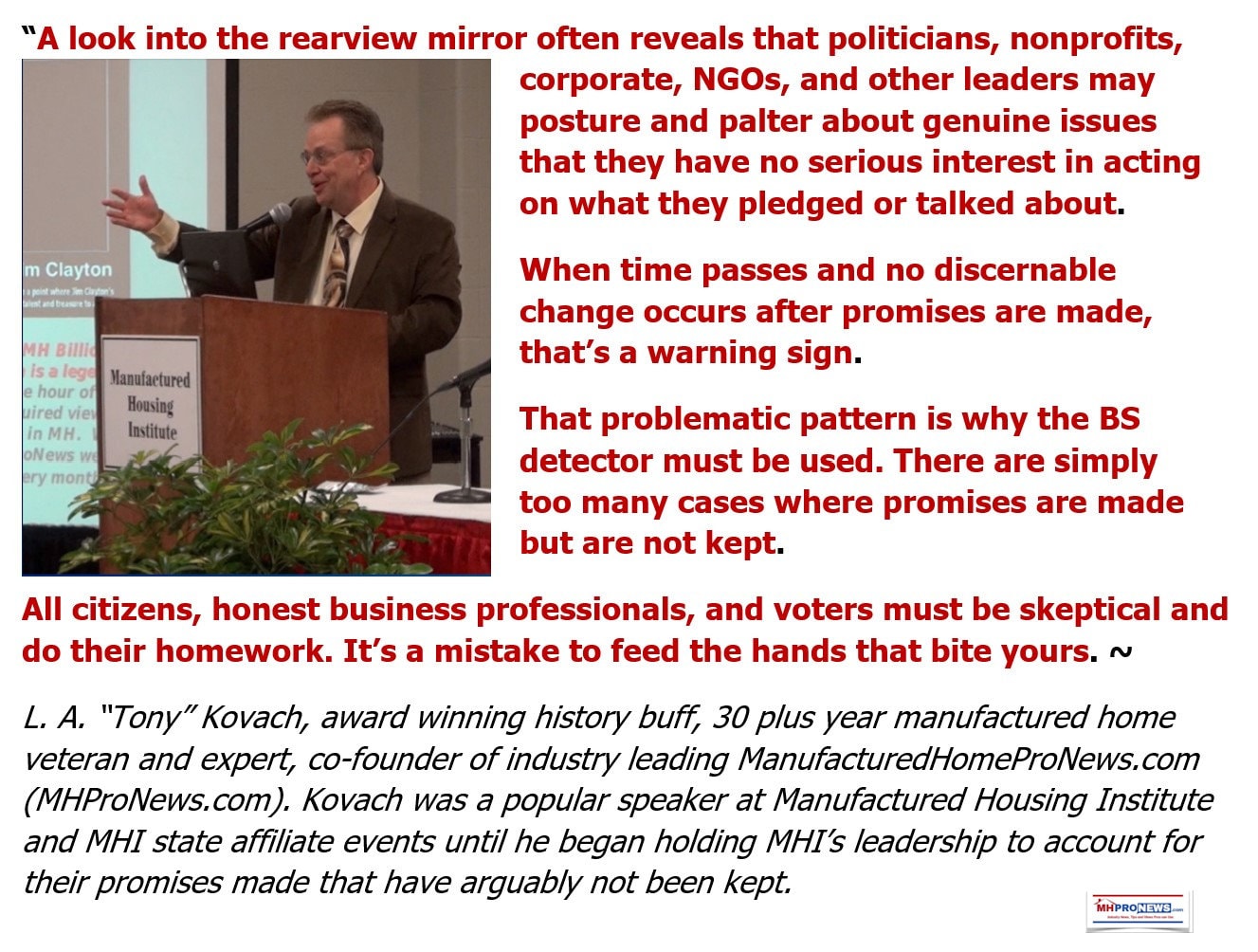
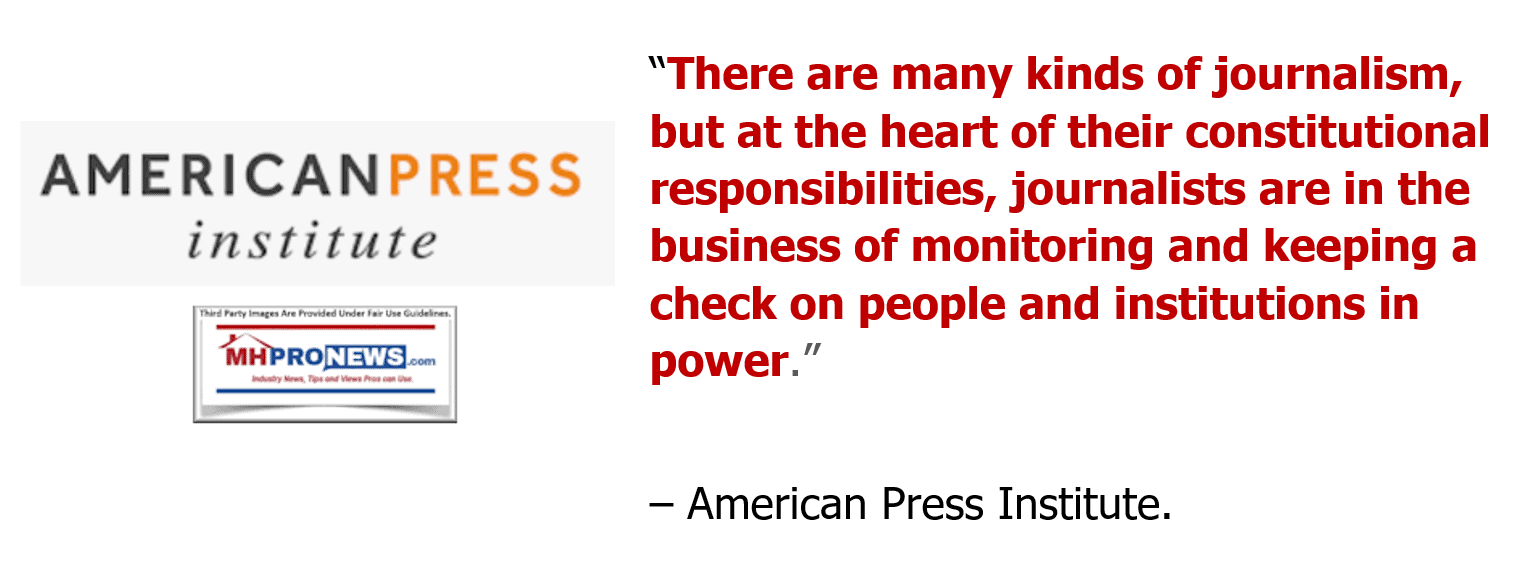

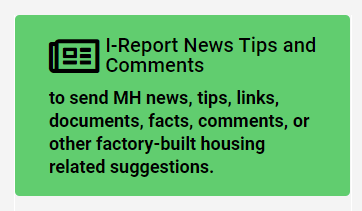
Again, our thanks to free email subscribers and all readers like you, our tipsters/sources, sponsors and God for making and keeping us the runaway number one source for authentic “News through the lens of manufactured homes and factory-built housing” © where “We Provide, You Decide.” © ## (Affordable housing, manufactured homes, reports, fact-checks, analysis, and commentary. Third-party images or content are provided under fair use guidelines for media.) (See Related Reports, further below. Text/image boxes often are hot-linked to other reports that can be access by clicking on them.)

By L.A. “Tony” Kovach – for MHProNews.com.
Tony earned a journalism scholarship and earned numerous awards in history and in manufactured housing.
For example, he earned the prestigious Lottinville Award in history from the University of Oklahoma, where he studied history and business management. He’s a managing member and co-founder of LifeStyle Factory Homes, LLC, the parent company to MHProNews, and MHLivingNews.com.
This article reflects the LLC’s and/or the writer’s position, and may or may not reflect the views of sponsors or supporters.
Connect on LinkedIn: http://www.linkedin.com/in/latonykovach
Related References:
The text/image boxes below are linked to other reports, which can be accessed by clicking on them.’
